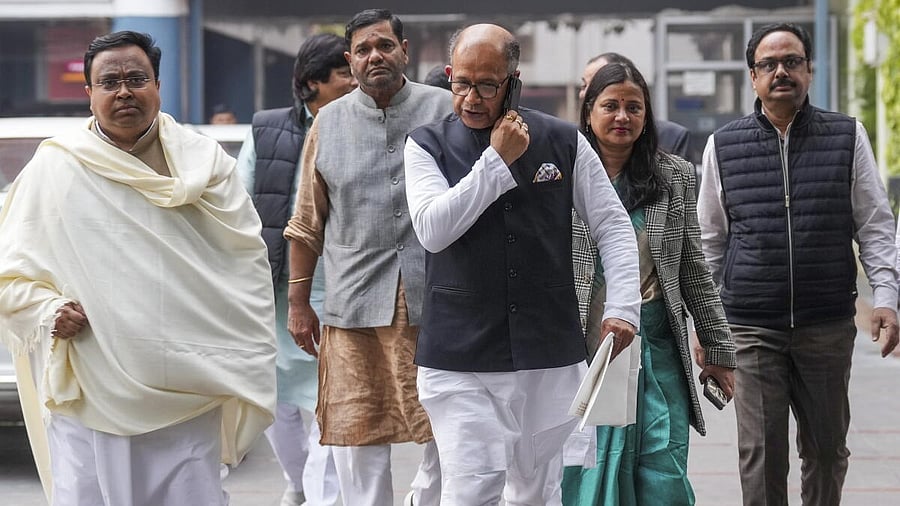
A delegation of BJD leaders leaves from Election Commission office in New Delhi after submission of a memorandum.
Credit: PTI Photo
New Delhi: The Biju Janata Dal (BJD) on Monday approached the Election Commission raising questions about the conduct of Lok Sabha and Assembly elections in Odisha earlier this year, claiming that people are “baffled” by the discrepancies that have emerged.
A delegation of BJD leaders, including its Rajya Sabha floor leader Sasmit Patra and former MP Amar Patnaik, submitted a memorandum to the EC during which they raised concerns about the mismatch in votes polled and counted in a booth among other things.
They also asked how there could be a huge difference between votes polled in a Lok Sabha seat and Assembly seat when simultaneous elections are held and how there could be a huge gap between the estimated voting percentage and final turnout figures.
“The people of Odisha and the political parties are baffled by this kind of discrepancy which has happened only in 2024. We would like te EC to take this up seriously and respond…” the memorandum said.
BJD was routed in the Lok Sabha and Assembly elections held this year. It did not win a single seat in Lok Sabha polls while in state elections, it lost to BJP 78-51, losing power for the first time since 1999.
“This issue is not just about winning or losing, nor is it about BJP or BJD. It concerns the need to strengthen electoral transparency and integrity, which are crucial for the country,” Patra told reporters after the meeting.
Raising the issue of mismatch of votes polled and votes counted, the BJD memorandum gave some examples. It said the differences of votes in booth no 165 and 219 of Talsara Assembly seat was 660 and 784 votes respectively while that of booth 57 of Phulbani, it was 682. It also gave examples of booths where the difference was 42, 3, 2 and 1.
“How is this possible?...The variance in these cases at single booth level is high enough to possibly impact the final outcome of the election in that Parliament/Assembly constituency. These variations also raise questions about the integrity of the whole process,” it said.
The memorandum claimed that there is a huge discrepancy in votes counted in a Parliamentary seat and the Assembly seats under it. The variations range from 4,056 votes in Dhenkanal Parliamentary seat to 3,521 in Kandhamal and 2,701 in Balangir. In the Jajpur Lok Sabha seat where the margin was only 2,000 votes, it said, the difference between Lok Sabha and Assembly seats is 677. This is a “serious discrepancy,” it said.
The memorandum also claimed that it was the first time in the history of Odisha elections that the reported voting percentage at the close of poll on polling day and final voting percentage after the end of poll reported by the EC after two days saw a difference ranging between 15% to 30%.
“In Keonjhar Assembly constituency from where the present Chief Minister Mohan Charan Manjhi was contesting, the difference between the voting percentage at the close of poll and end of poll is 30.64% and the difference between the voting percentage at 11.45 PM of the poll day and final percentage published by the EC after two days is 10%,” it said.
